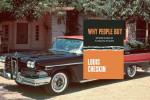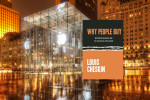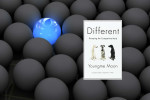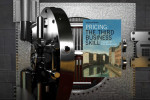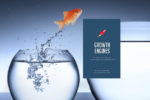How to predict what people will buy
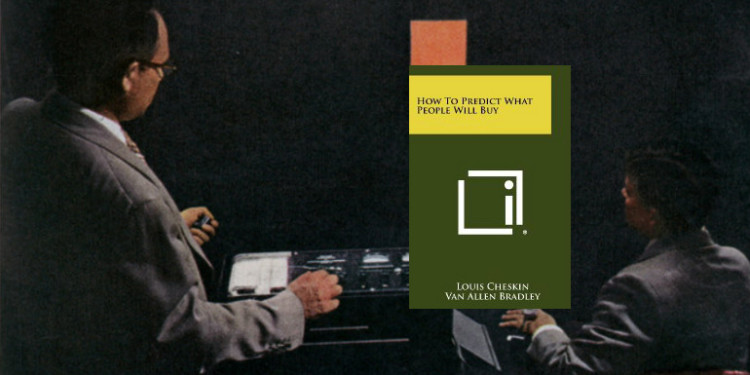
How To Predict What People Will Buy by Lois Cheskin
Louis Cheskin (1907-1981) was a marketing pioneer, one of the first people to bring social science to bear on marketing activities. He was an authority on color and art and brought discoveries from Gestalt psychology and psychoanalysis into market research. Cheskin was adamant about testing and used sophisticated techniques to ascertain the influence of color, shape, and overall presentation on purchasing behavior, specifically packaging. In How To Predict What People Will Buy
, Cheskin outlines his research methods and gives examples of his consumer insights. Published in 1957 (one year before the Edsel was introduced–they had time to read it!), this book provides deep insights into the psychology of buying.
Cheskin found that most decisions are made unconsciously. He noted that “much of the effort put forth in marketing research, in product design, in advertising campaigns, and so on, either is based on the unsound assumption that people consciously consider certain features of a product or is the expression of shrewd ‘hunches’ which happen to be right because they were made by men with wide experience in what will sell.” As a result, the type of testing required for new packaging should be unconscious testing, bypassing the ego function, rather than asking explicit questions directed at the rational mind. He used the principles of psychology to establish testing programs which effectively measured preference of the whole presentation as well as its constituent parts. Unconscious associations with colors and shapes were key inputs into trademark and brand design. Cheskin sought to de-mystify market research and place it on a solid scientific foundation.
A package design, an advertising page, a poster, a billboard, counter or window display are all governed by the same optical and psychological principles. Basically, all are different types of product displays. Display is defined as a visual medium for influencing people.
The goal of Cheskin’s research was primarily effective package design. He begins the book by stating that nothing beats a great product, but a great product is only one of four pillars of marketing. The other three are package character, advertising effectiveness, and price base.
Many of those who started business without research facilities or without having the services of independent product research laboratories are out of business.
Many still consider art and science as separate and unrelated entities…Because of temperament, early conditioning and education, artists generally object to putting their creations to scientifically controlled testing.
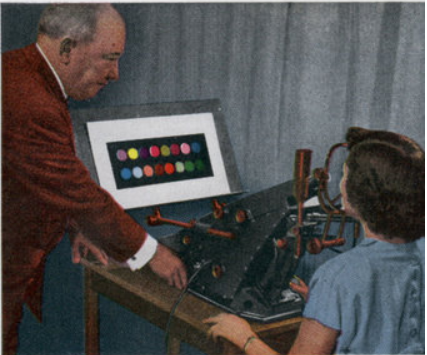 Cheskin was a dedicated and innovative researcher. He was ruthlessly objective and understood that many purchase behaviors and influences could be determined through careful study. His company, the Color Research Institute, discovered associations between colors and concepts such as “strong”, “weak”, “high quality”, and “mediocre”. He categorized colors into those that attracted attention and those that held attention, two separate needs in a supermarket environment.
Cheskin was a dedicated and innovative researcher. He was ruthlessly objective and understood that many purchase behaviors and influences could be determined through careful study. His company, the Color Research Institute, discovered associations between colors and concepts such as “strong”, “weak”, “high quality”, and “mediocre”. He categorized colors into those that attracted attention and those that held attention, two separate needs in a supermarket environment.
He use an ocular measurement devices to identify where people’s eyes landed when they were presented with a package or display. This eye-tracking technique is currently used to produce heat maps for web page design.
The “self service” market which experienced growth in the 1950’s called for a careful investment in packaging, which was considered “the silent salesman.” Cheskin turned package design from a subjective art into repeatable, scientific approach.
Market testing at an unconscious level
He derides much of what passes for market research because it gives one a false sense of security. Cheskin says “scientifically controlled tests have demonstrated that individuals cannot tell what influences them.” People are not aware that they have an unconscious preference for a color or image.
Likewise, the influence of product packaging is not consciously felt. Conducting tests at an unconscious level ensures “individuals are not aware that a test is being conducted or they do not know what is being tested.” Cheskin draws a careful line and does not attempt to psychoanalyze consumers or help them live better lives. He is attempting to generalize human preferences based on an examination of the unconscious preferences of all people.
Cheskin was careful to avoid engaging people’s egos (higher levels of consciousness). He wrote “…people reveal their preferences and attitudes in spontaneous expressions and in unconscious reactions. In situations in which there are ego-involvements, in which prestige identification factors are present and in which defense mechanisms play a part, we should not expect expressions of real preferences or true attitudes.” Test subjects cannot tell the researcher what they do not know, so explicit questions often simulate a decision making process that is not at play in real purchase situations.
Cheskin used a graphometer (a device like a lie detector) to measure unconscious reactions to various images and concepts. This led to the conclusion that packaging which has “appetite appeal”–for example, images of a sizzling steak or toast melting on butter.
Gestalt psychology
From Gestalt psychology, Cheskin incorporated the idea that the whole is not just the sum of its parts; it may be more or less than the sum of its parts. This led him to first test individual elements of a package to identify strong and weak components and then the whole design. Cheskin derived several of his key rules of market testing from Gestalt theory:
- To isolate weak packaging elements from strong ones, the researcher must test the component elements separately
- To determine the whole package or ad, the whole package or ad must be tested.
Cheskin found many commonalities in terms of shape and color preferences: ovals are preferred over circles; triangles with smooth edges are preferred over those with sharp edges. Although a great deal of money was spent promoting chartreuse, magenta red retained its preference over a long test period.
Psychoanalysis
Psychoanalysis also puts emphasis on the importance of imagery. Psychoanalytic studies have show clearly that people “think” in terms of images. They act in accordance with image impressions. They react to images, not ideas.
Psychoanalysis was one of the key contributors to Cheskin’s method. From it, he developed the understanding that unconscious factors play an important role in our perceptions and decisions. When discussing depth interviews, another technique spawned from psychoanalysis, Cheskin says: “Shoppers do not have discussions in the store. They are affected visually. The merely react. They are motivated by images which they could not possibly discuss because they are not conscious of the effect these image have upon them.” Cheskin was a pioneer in bringing scientific knowledge of human decision making processes into the domain of marketing. He understood that, like the relationship between analyst and patient, the relationship between the research subject and the researcher will effect the outcome of the study. The subject is likely to want to be helpful and come across intelligent and rational, not necessarily as they behave in a purchase situation.
Cheskin contrasts his approach with that of John B. Watson, founder of Behaviorism. Behaviorism asserts that people have “no inherent attitudes towards anything. Applied to advertising, it asserts that constant repetition will create desired purchase behaviors. Cheskin discredits this approach with evidence from psychoanalytic findings about the subconscious nature of much of our behavior, much of which cannot be changed.
Sensation Transference
A good restaurant owner knows that people eat with their eyes.
One of Cheskin’s most important insights was the idea that a positive reaction to packaging, an image, or brand will transfer to the product itself. Similarly, a negative association with the presentation of the product will reflect poorly on the product. Cheskin validated this principle in many tests; for example, consumers were asked to rate what they believe to be three different types of coffee. The coffee was the same in all cases, only the packaging was different. This illustrates Cheskin’s indirect testing methodology where he asked the participants to rate the coffee, but what they were actually doing was rating the packaging unconsciously. He frequently cites another example where he gave his research participants white butter and yellow margarine. Since they came to the study with a bias towards yellow as a desirable color, they rated the yellow margarine as better tasting than white butter, even though they said they believed margarine was an inferior product.
More about Louis Cheskin
YOUR COLOR TYPE and how to live with it (Feb, 1950)

